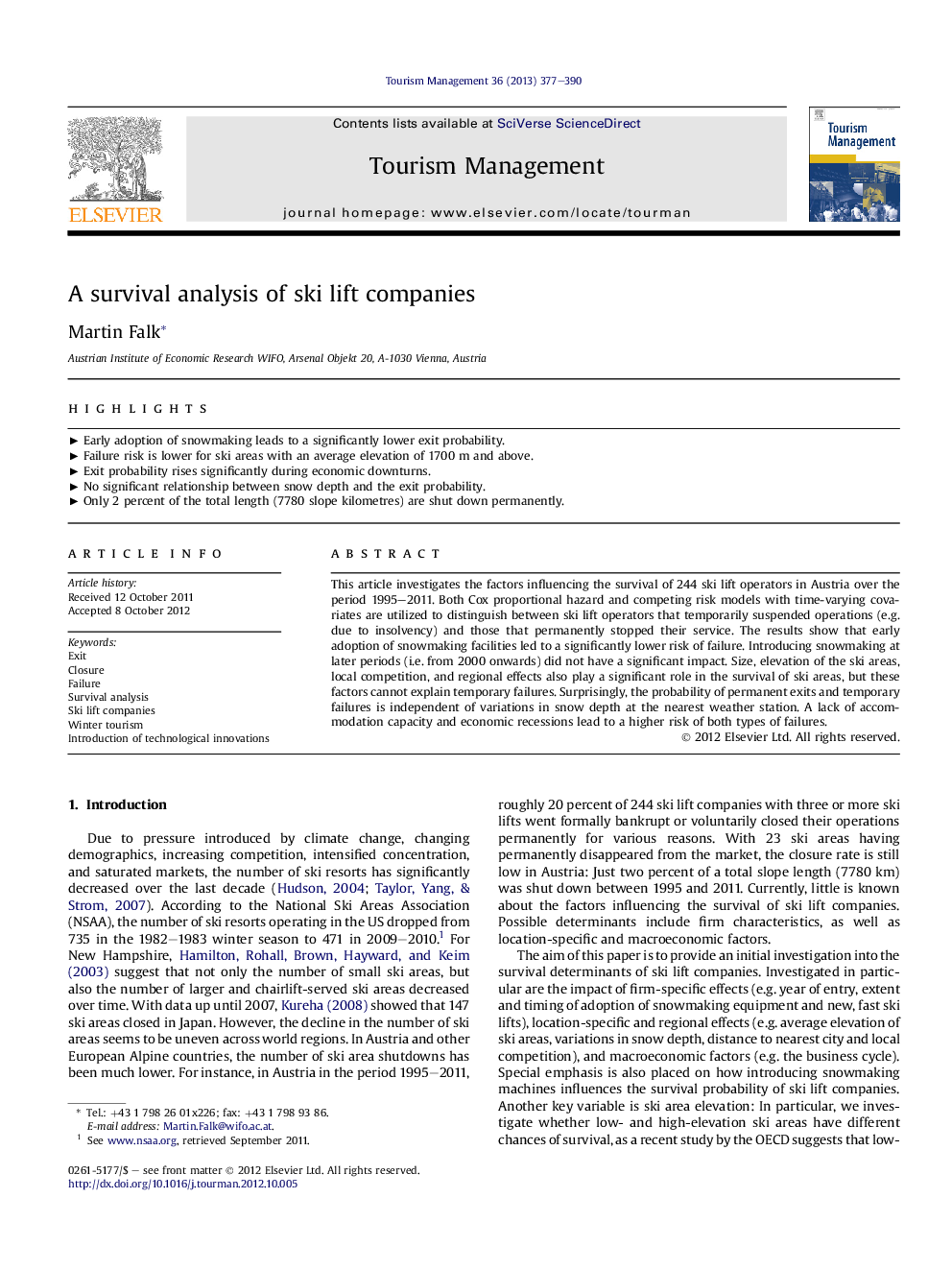| کد مقاله | کد نشریه | سال انتشار | مقاله انگلیسی | نسخه تمام متن |
|---|---|---|---|---|
| 1012297 | 1482647 | 2013 | 14 صفحه PDF | دانلود رایگان |

This article investigates the factors influencing the survival of 244 ski lift operators in Austria over the period 1995–2011. Both Cox proportional hazard and competing risk models with time-varying covariates are utilized to distinguish between ski lift operators that temporarily suspended operations (e.g. due to insolvency) and those that permanently stopped their service. The results show that early adoption of snowmaking facilities led to a significantly lower risk of failure. Introducing snowmaking at later periods (i.e. from 2000 onwards) did not have a significant impact. Size, elevation of the ski areas, local competition, and regional effects also play a significant role in the survival of ski areas, but these factors cannot explain temporary failures. Surprisingly, the probability of permanent exits and temporary failures is independent of variations in snow depth at the nearest weather station. A lack of accommodation capacity and economic recessions lead to a higher risk of both types of failures.
► Early adoption of snowmaking leads to a significantly lower exit probability.
► Failure risk is lower for ski areas with an average elevation of 1700 m and above.
► Exit probability rises significantly during economic downturns.
► No significant relationship between snow depth and the exit probability.
► Only 2 percent of the total length (7780 slope kilometres) are shut down permanently.
Journal: Tourism Management - Volume 36, June 2013, Pages 377–390